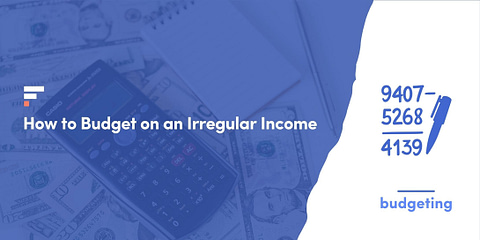How do you handle your money? Are you curious about how people in other countries handle theirs? Our Budgeting Around the World series opens a window on the financial situations and decisions of a cross-section of individuals in different countries. Today we’ll look at the finances of a college student in Chicago, Illinois, the 3rd largest city in the USA.
Chicago is the economic center of the US Midwest. The city has the most diversified urban economy in the US, with real estate, manufacturing, finance & insurance, professional services, government, and healthcare all making substantial contributions and no industry employing over 12% of the workers.[1] Chicago is the 3rd most populous city in the US, but came in 17th in the Numbeo.com cost of living rankings for cities in the Americas, above San Diego and Philadelphia but below Los Angeles or Washington DC.[2]
🌎 This article is part of our Budgeting Around the World series, a comparative look at how people around the world manage their money.
👼 Click here to learn how you too can contribute to this series and help us support a great charity in the process.
Did You Know
- The median individual income in Chicago is $31,613/year, close to the US average of $31,333/year.[3]
- The Illinois state income tax rate is 4.95%; combines state and local sales tax ranges from 6.24% to 11%.[4]
- US Federal income tax brackets range from 10% to 37%, depending on income.[5]
- The average cost of health insurance in Chicago is $589/person.[6]
- The Chicago area unemployment rate in Dec. 2020 was 8.1%, down from a pandemic peak of 17.3.[7]
What Does it Cost in Chicago?
- 3-course meal for 2, mid-range restaurant: $72.50
- Beef round, 1 kg: $12.05
- Domestic beer, .5 liter: $6.00
- Broadband Internet: $64.57
- Cinema, 1 seat: $14.00
- Monthly public transport pass: $105.00
- 3 bedroom apartment, city center: $3,638.56
On the “Big Mac Index” Chicago, along with the rest of the US, ranks 4th out of 56 countries surveyed, with the iconic burger costing US$5.66.
📘 If you’re interested in budgeting but not sure where to start we’ve got you covered. Read our guides on how to start budgeting and choosing the right budgeting method.
Getting to Know the Household
We started our interview with some basic questions about the household, their lifestyle, and their approach to managing their finances.
Introduce yourself – Tell us a couple of things about yourself so we get to know you better.
I’m a junior in college studying in the business school, currently have an internship, and I love reading and playing chess.
Location – Where do you live (city, country)? What kind of place is it? How do you like living there?
Chicago, United States. I love living in a big city.
Household structure – How many adults, kids, what ages?
I live by myself.
Occupation – What do you and other adults in the household do for a living?
Student with an internship.
Net household income – What is the take-home pay of your household (income after taxes and other deductions)?
Around $30K-$40K a year.
Sources of additional income (monthly and annual) – List any sources of income other than your salary.
Internships, university jobs.
How would you describe your standard of living? – Based on the place you live in, your income, compared to other people around you…
Above average, upper middle class. I have everything I need and can treat myself frequently but never anything extravagant.
.What is your approach to managing your finances? – What is your general approach or personal philosophy on managing your finances? Do you use a budget, and if you do – do you generally stick to it? How do you make financial decisions in your household?
I have a budget, but it’s not strict. It gives me an idea of how much I’ve saved over the past months, how much I’m currently making, and how much I have available to spend on necessities versus fun things but no hard, set-in-stone guidelines.
Let’s Break Down the Expenses
Now we’ll break down our respondent’s monthly household expenses into different budget categories.
📧 Get notified when we publish the next post in this series by subscribing to our newsletter!
🏠 Housing
$1420
(48.69%)
Rent (with water, gas, maintenance included).
🔌 Utilities
$80
(0.27%)
Electricity, internet
🍕 Food
$450.00
(15.43%)
Around $200 on groceries, $100 on alcohol, and the rest is on restaurants/delivery. There are some fluctuations between the categories, but it rarely exceeds $450.
🚗 Transportation
$0
(0%)
I have a public transportation pass included with tuition. Don’t have a car in the city. Don’t use Uber/Lyft.
🏦 Debt & loans
$0
(0%)
I’m still in school, and while I have started to pay down my loans, it’s not a monthly thing. I’m also holding off to see what the Biden administration does in terms of student loan forgiveness. I also use my credit card like a debit card and just immediately pay it off.
👶 Kids
$0
(0%)
No kids, just me 🙂
👗 Clothing and personal care
$100
(3.43%)
This is not a monthly thing for me. Some months, I’ll spend $300 on clothes, and others I’ll spend $0. It just depends on what I need.
🧹 Household supplies
$100
(3.43%)
I track it as “apartment needs” which is sort of a catch-all. I don’t have a good breakdown other than the description you provided.
🐶 Pets
$0
(0%)
No pets yet.
🛡 Insurance
$0
(0%)
I’m still covered under my parents plan.
🏥 Healthcare
$0
(0%)
I’m lucky enough that if I ever have an expense my parents help me take care of it.
🎮 Entertainment
$100
(3.43%)
So the vast majority of this is for books, but during non coronavirus times, it will increase to probably around $300 and also be sporting events, plays, concerts.
💻 Subscriptions
$42
(1.44%)
WSJ, Amazon Prime, Spotify, Book of the Month, DoorDash pass, Twitch.
⛪ Charity/Donations
$68
(2.33%)
Give directly, Humanity Forward, Clean Air Task Force, and Minute Earth on Patreon.
🏦 Savings
$800
(27.43%)
General savings that I am slowly starting to invest over time.
* All figures are as reported by respondents. Totals may not add up to 100%.
📘 We only included the categories in which this particular household has any monthly expenses. View the full list of budget categories we used for this survey, along with what’s included in each of those categories: 110 Budget Categories.



























